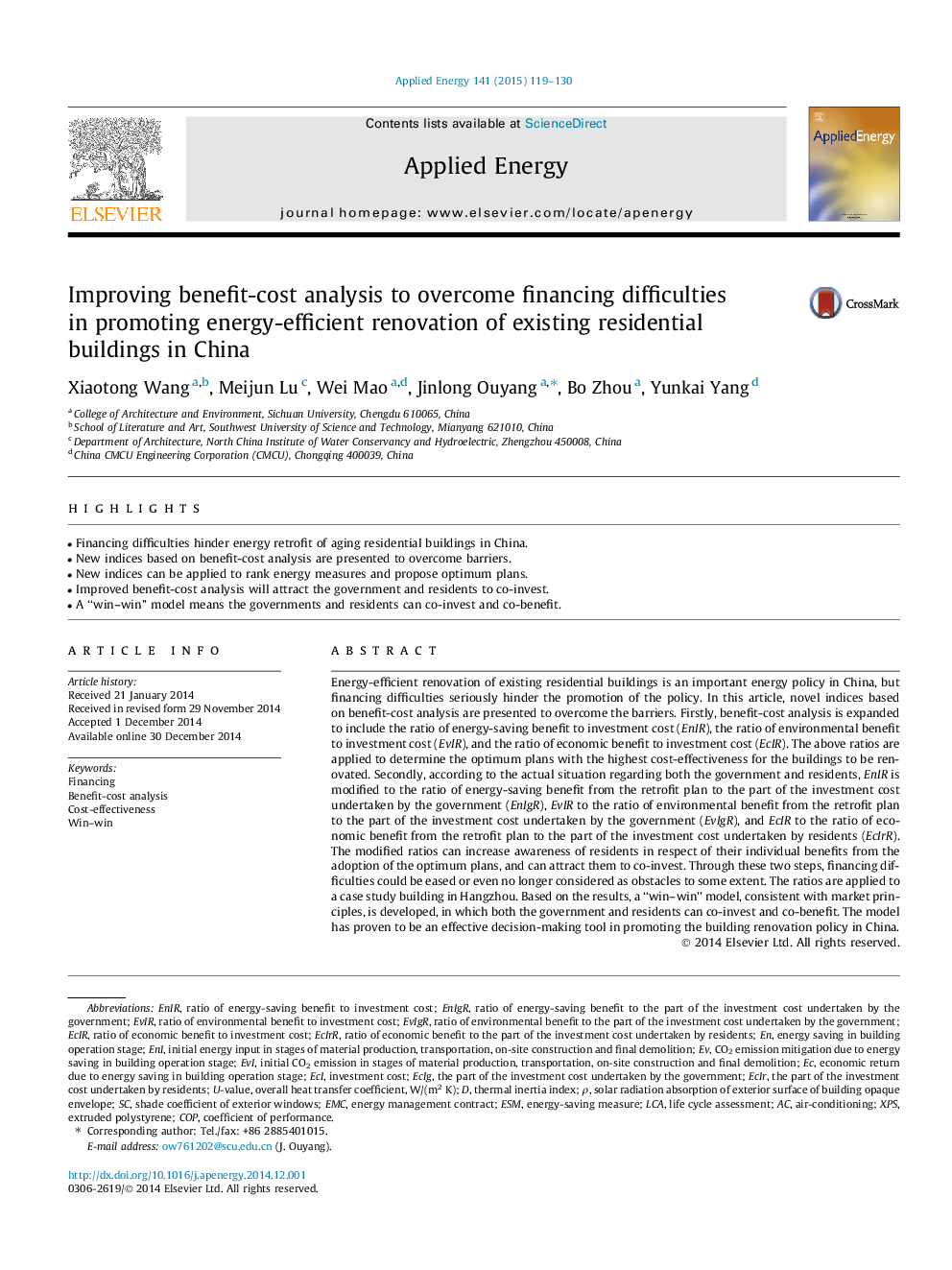| Article ID | Journal | Published Year | Pages | File Type |
|---|---|---|---|---|
| 242618 | Applied Energy | 2015 | 12 Pages |
•Financing difficulties hinder energy retrofit of aging residential buildings in China.•New indices based on benefit-cost analysis are presented to overcome barriers.•New indices can be applied to rank energy measures and propose optimum plans.•Improved benefit-cost analysis will attract the government and residents to co-invest.•A “win–win” model means the governments and residents can co-invest and co-benefit.
Energy-efficient renovation of existing residential buildings is an important energy policy in China, but financing difficulties seriously hinder the promotion of the policy. In this article, novel indices based on benefit-cost analysis are presented to overcome the barriers. Firstly, benefit-cost analysis is expanded to include the ratio of energy-saving benefit to investment cost (EnIR), the ratio of environmental benefit to investment cost (EvIR), and the ratio of economic benefit to investment cost (EcIR). The above ratios are applied to determine the optimum plans with the highest cost-effectiveness for the buildings to be renovated. Secondly, according to the actual situation regarding both the government and residents, EnIR is modified to the ratio of energy-saving benefit from the retrofit plan to the part of the investment cost undertaken by the government (EnIgR), EvIR to the ratio of environmental benefit from the retrofit plan to the part of the investment cost undertaken by the government (EvIgR), and EcIR to the ratio of economic benefit from the retrofit plan to the part of the investment cost undertaken by residents (EcIrR). The modified ratios can increase awareness of residents in respect of their individual benefits from the adoption of the optimum plans, and can attract them to co-invest. Through these two steps, financing difficulties could be eased or even no longer considered as obstacles to some extent. The ratios are applied to a case study building in Hangzhou. Based on the results, a “win–win” model, consistent with market principles, is developed, in which both the government and residents can co-invest and co-benefit. The model has proven to be an effective decision-making tool in promoting the building renovation policy in China.
